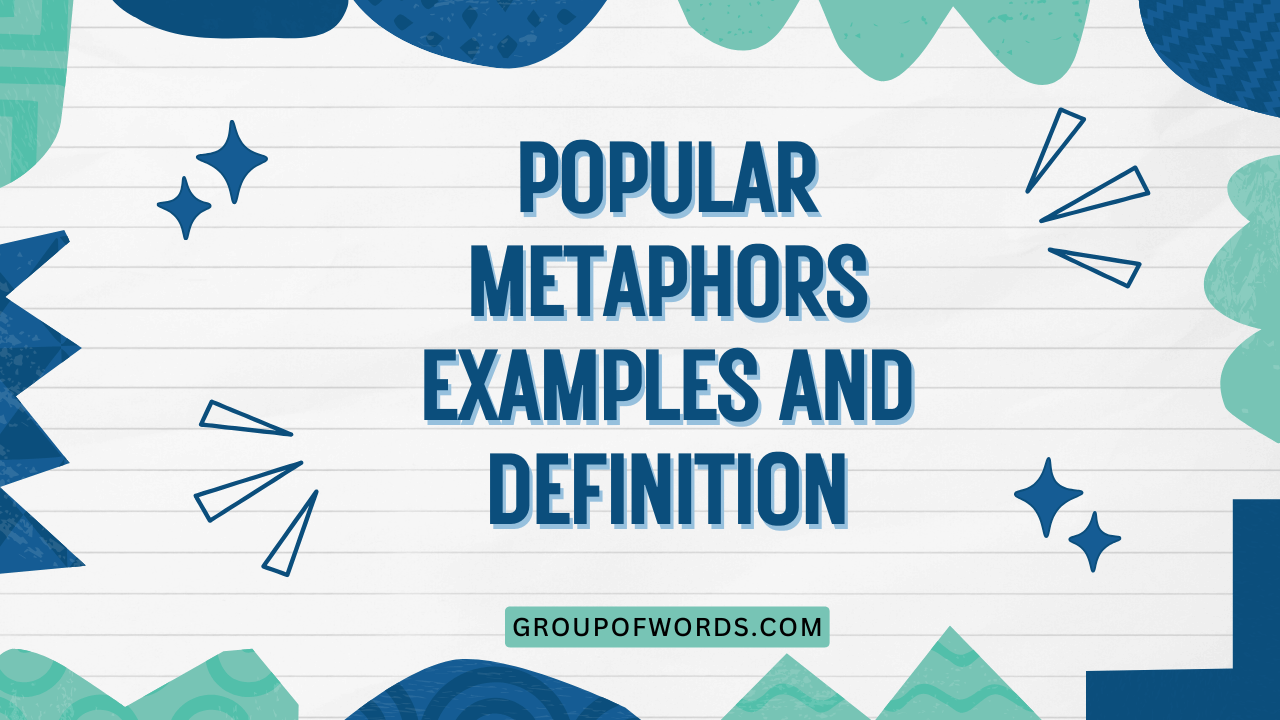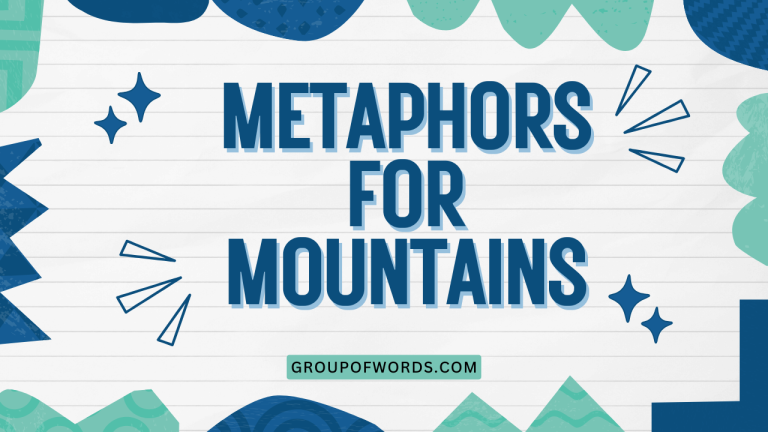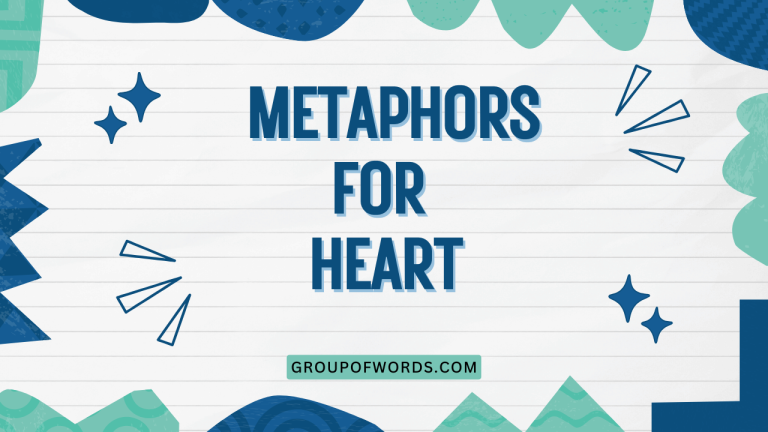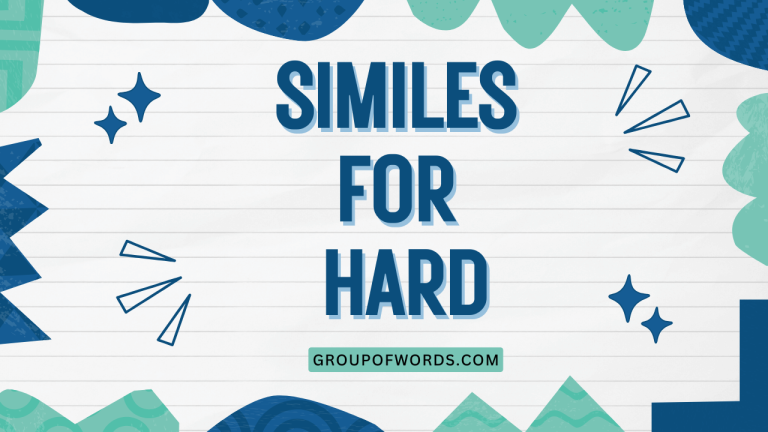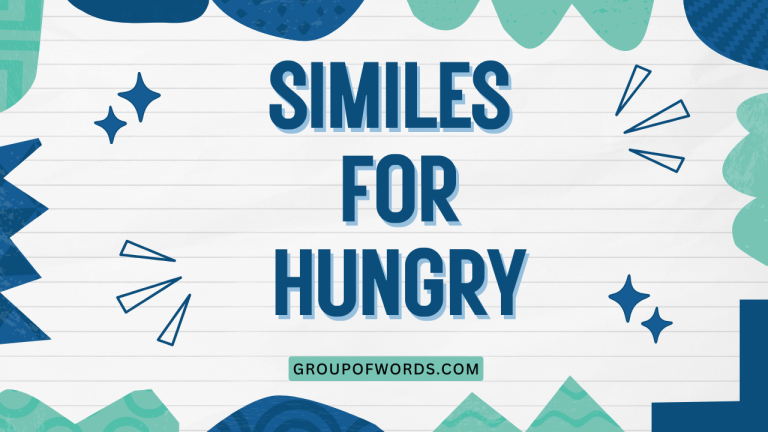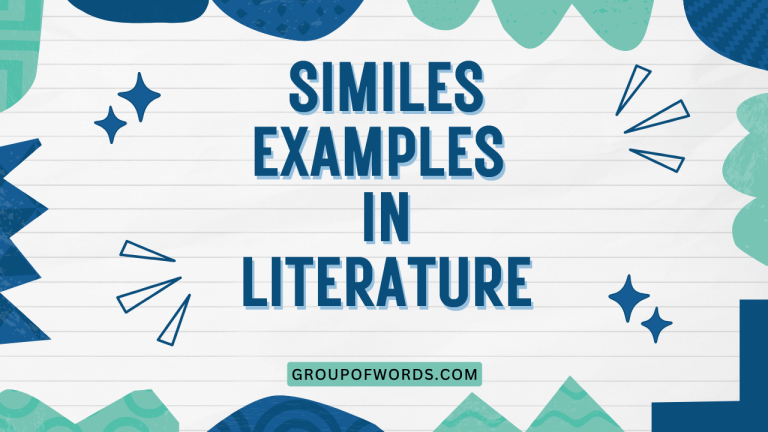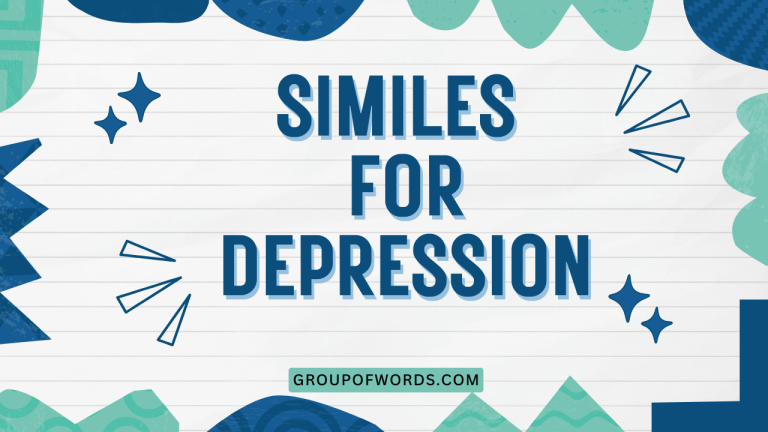Popular Metaphors: Examples, Definition, and Usage
Metaphors are a cornerstone of figurative language, enriching our communication by allowing us to understand one thing in terms of another. Mastering metaphors is essential for anyone looking to improve their English comprehension and expression, whether for academic, professional, or personal reasons.
This article provides a comprehensive guide to metaphors, covering their definition, structure, types, usage rules, common mistakes, and practical exercises to help you confidently use them in your writing and speech. By delving into the nuances of metaphors, this guide aims to equip English learners of all levels with the tools to enhance their linguistic skills and appreciate the art of figurative language.
Table of Contents
- Definition of Metaphor
- Structural Breakdown of a Metaphor
- Types of Metaphors
- Examples of Metaphors
- Usage Rules for Metaphors
- Common Mistakes with Metaphors
- Practice Exercises
- Advanced Topics in Metaphors
- Frequently Asked Questions (FAQ)
- Conclusion
Definition of Metaphor
A metaphor is a figure of speech that directly compares two unrelated things, asserting that one thing is another. Unlike similes, which use words like “like” or “as” to make a comparison, metaphors create a direct equation, implying a shared quality or characteristic between the two subjects. The primary function of a metaphor is to provide a new perspective or understanding of a concept by associating it with something more familiar or concrete. This can enhance the descriptive power of language, making it more vivid, imaginative, and engaging.
Metaphors are pervasive in everyday language, literature, and even scientific discourse. They allow us to express abstract ideas in more tangible terms, making complex subjects more accessible.
By understanding the underlying comparison, readers or listeners can gain a deeper appreciation for the intended meaning and the artistry of the language used. The context in which a metaphor is used is crucial for its interpretation; the same metaphor can convey different meanings depending on the surrounding words and the overall intent of the speaker or writer.
Structural Breakdown of a Metaphor
Understanding the structure of a metaphor involves identifying its key components: the tenor, the vehicle, and the ground. The tenor is the subject being described or represented. The vehicle is the object or concept used to represent the tenor. The ground refers to the shared characteristics or qualities between the tenor and the vehicle that make the comparison meaningful. In essence, the vehicle lends its attributes to the tenor, creating a new understanding of the subject.
For example, in the metaphor “Time is a thief,” “time” is the tenor (the subject being described), “thief” is the vehicle (the object used for comparison), and the ground is the shared characteristic of taking something valuable away without permission. The effectiveness of a metaphor depends on the clarity and relevance of the ground.
A well-chosen vehicle can illuminate the tenor in a surprising and insightful way, while a poorly chosen vehicle can confuse or mislead the audience. Recognizing these components allows for a deeper analysis and appreciation of metaphorical language.
Types of Metaphors
Metaphors come in various forms, each with its unique characteristics and functions. Understanding these different types can help you better identify and use metaphors effectively.
Standard Metaphors
Standard metaphors are commonly used expressions where the comparison is easily understood and widely accepted. These metaphors have become part of everyday language, often without the speaker or listener consciously recognizing them as metaphors.
They are effective because their meaning is readily accessible and requires little interpretation.
Examples include “the heart of the matter,” “a sea of troubles,” and “the world is a stage.” These phrases have become so ingrained in our language that they are often used without much thought, yet they still retain their metaphorical power to convey meaning in a concise and impactful way.
Extended Metaphors
An extended metaphor is a metaphor that is developed over several lines or even throughout an entire work. It allows for a more detailed and complex comparison, exploring multiple facets of the relationship between the tenor and the vehicle.
By sustaining the metaphor, the writer can create a richer and more nuanced understanding of the subject.
Extended metaphors are often found in poetry and literature, where they serve to deepen the thematic content and enhance the emotional impact of the work. For example, a poem might compare life to a journey, exploring various aspects of the journey such as obstacles, companions, and destinations, to illuminate the complexities of human existence.
Mixed Metaphors
A mixed metaphor occurs when two or more incompatible metaphors are combined into a single expression. This often results in a nonsensical or humorous effect, as the conflicting images create a confusing and illogical comparison.
While sometimes used intentionally for comedic effect, mixed metaphors are generally considered a stylistic error.
An example of a mixed metaphor is “We need to nip it in the bud before it snowballs out of control.” This combines the metaphor of cutting off a plant before it blooms with the metaphor of a snowball growing larger as it rolls down a hill, creating a disjointed and confusing image.
Dead Metaphors
Dead metaphors are metaphors that have become so overused that they have lost their original figurative meaning and are now perceived as literal expressions. These metaphors have become integrated into everyday language to the point where their metaphorical nature is no longer recognized.
While they were once vivid and imaginative, they have become clichés through constant repetition.
Examples of dead metaphors include “the leg of a table,” “the hands of a clock,” and “falling in love.” These phrases are used so frequently that their metaphorical origins are often forgotten, and they are simply understood as the standard way of describing those objects or experiences.
Conceptual Metaphors
Conceptual metaphors are underlying mental structures that shape our understanding of abstract concepts. They are often unconscious and influence the way we think and talk about the world.
These metaphors are not just linguistic devices but fundamental cognitive tools that help us make sense of complex ideas.
For example, the conceptual metaphor “ARGUMENT IS WAR” underlies many of our expressions related to arguments, such as “He attacked my position,” “I defended my argument,” and “He won the argument.” This metaphor shapes our understanding of arguments as combative and adversarial.
Examples of Metaphors
To further illustrate the concept of metaphors, here are several examples categorized for clarity.
Examples of Standard Metaphors
The following table provides a selection of standard metaphors frequently used in everyday conversation and writing.
| Metaphor | Explanation |
|---|---|
| Time is money. | Time is a valuable resource that can be spent, saved, or wasted. |
| Life is a journey. | Life is a process with a beginning, middle, and end, involving challenges and experiences. |
| The world is a stage. | People play different roles in life, acting out their parts in society. |
| Love is a battlefield. | Love can be a struggle, involving conflict and challenges. |
| He is a lion in battle. | He is brave and fierce in combat. |
| She is a ray of sunshine. | She brings happiness and warmth to those around her. |
| The city is a jungle. | The city is a dangerous and competitive environment. |
| Her words were music to his ears. | Her words were pleasing and delightful to him. |
| He has a heart of gold. | He is kind and generous. |
| The test was a piece of cake. | The test was easy to complete. |
| Ideas are seeds. | Ideas can grow and develop over time. |
| Laughter is the best medicine. | Laughter can heal and improve one’s well-being. |
| Books are doors to another world. | Books provide access to new experiences and perspectives. |
| The internet is an information superhighway. | The internet provides fast and easy access to information. |
| Education is a ladder. | Education helps people climb to higher levels of success. |
| He is a night owl. | He is someone who stays up late at night. |
| She is an early bird. | She is someone who wakes up early in the morning. |
| Friendship is a sheltering tree. | Friendship provides comfort and support. |
| Grief is a heavy burden. | Grief is emotionally and mentally draining. |
| Anger is a fire. | Anger is destructive and consuming. |
| Fear is a dark room. | Fear is isolating and disorienting. |
| Hope is a fragile flower. | Hope is delicate and needs to be nurtured. |
| Memory is a fading photograph. | Memories become less clear over time. |
| Dreams are castles in the sky. | Dreams are often unrealistic and unattainable. |
| Silence is golden. | Silence is valuable and beneficial in certain situations. |
| Curiosity killed the cat. | Being too curious can lead to trouble. |
Examples of Extended Metaphors
The following table illustrates how a single metaphor can be extended across multiple sentences or paragraphs to create a more detailed comparison.
| Metaphor | Explanation |
|---|---|
| Life is a stage, and all the men and women merely players; They have their exits and their entrances, And one man in his time plays many parts. | This extended metaphor from Shakespeare’s As You Like It compares life to a theatrical performance, with individuals playing various roles throughout their lives, highlighting the transient and performative nature of human existence. |
| The fog comes on little cat feet. It sits looking |
Carl Sandburg’s poem uses an extended metaphor, comparing fog to a cat. The fog quietly approaches, observes the area, and then silently departs, mirroring a cat’s behavior. |
| My life is a book, each chapter a different stage. Some chapters are filled with joy and laughter, while others are marked by sorrow and tears. The characters I meet along the way shape my story, and the lessons I learn become the wisdom I carry forward. As I turn each page, I eagerly anticipate what the next chapter will bring. | This extended metaphor compares life to a book, with each phase representing a chapter. The narrative unfolds with experiences, relationships, and lessons learned, creating a rich and evolving story. |
| Education is a long and winding road, full of twists and turns. Sometimes the path is smooth and easy, allowing for rapid progress. Other times, it is steep and rocky, requiring perseverance and determination. But with each step forward, we gain new knowledge and skills, expanding our horizons and reaching new heights. | This extended metaphor portrays education as a journey, emphasizing the challenges and rewards along the way. The ups and downs of the road symbolize the varying difficulties encountered in learning, while the ultimate destination represents the attainment of knowledge and personal growth. |
| Friendship is a garden, requiring constant care and attention. We must nurture our friendships with kindness, understanding, and support. Like delicate flowers, friendships can wither and fade if neglected. But with regular watering and pruning, they can blossom into beautiful and enduring relationships. | This extended metaphor compares friendship to a garden, highlighting the need for continuous effort and care. The analogy underscores the importance of nurturing relationships to ensure their longevity and vibrancy. |
Examples of Mixed Metaphors
The table below presents examples of mixed metaphors, showcasing the combination of incompatible images that can lead to confusion or humor.
| Metaphor | Explanation |
|---|---|
| Let’s table that discussion and iron out the details. | This mixes “tabling” (postponing) a discussion with “ironing out” (resolving) details, creating a contradictory image. |
| We need to nip it in the bud before it snowballs out of control. | This combines “nipping it in the bud” (stopping something early) with “snowballing out of control” (growing rapidly), resulting in a disjointed comparison. |
| He burned that bridge when he hit the ground running. | This mixes “burning a bridge” (severing a relationship) with “hitting the ground running” (starting quickly and successfully), creating an illogical combination. |
| That’s the last straw that broke the camel’s back, but we’ll cross that bridge when we get there. | This combines “the last straw” (the final burden) with “crossing that bridge” (dealing with a problem when it arises), resulting in a confusing image. |
| We’re out of the woods, but we’re not home free yet. | This combines “out of the woods” (past a difficult situation) with “home free” (completely safe), creating a redundant and slightly illogical statement. |
| The squeaky wheel gets the worm. | This mixes “the squeaky wheel gets the grease” (those who complain get attention) with “the early bird gets the worm” (those who act first benefit), creating a nonsensical combination. |
Examples of Dead Metaphors
The following table lists examples of dead metaphors, which have lost their figurative meaning through overuse and are now considered literal expressions.
| Metaphor | Original Meaning |
|---|---|
| The leg of a table | Originally compared the supporting structure of a table to the limb of an animal. |
| The hands of a clock | Compared the pointers on a clock to human hands indicating the time. |
| Falling in love | Implied a sudden and uncontrollable descent into a state of affection. |
| Head of the company | Compared the leader of a company to the head of a body, representing authority and control. |
| A broken heart | Metaphorically described the emotional pain and suffering caused by the end of a romantic relationship. |
| The tip of the iceberg | Compared a small visible portion of a problem to the much larger hidden issue beneath the surface. |
| Walking on eggshells | Described being cautious and careful in one’s actions or words to avoid causing offense or trouble. |
| The root of the problem | Compared the underlying cause of an issue to the root of a plant, representing its foundation. |
Usage Rules for Metaphors
Using metaphors effectively requires careful consideration of several factors. Clarity is paramount; the comparison should be readily understandable to the audience. Relevance is also crucial; the vehicle should have a meaningful connection to the tenor. Originality can enhance the impact of a metaphor, but avoid being too obscure or convoluted. Consistency is important, especially when using extended metaphors; maintain a consistent image throughout the passage. Finally, avoid mixed metaphors, which can create confusion and undermine your message.
When using metaphors, be mindful of your audience and the context in which you are speaking or writing. A metaphor that is effective in one situation may be inappropriate in another.
Consider the cultural background and knowledge level of your audience to ensure that your metaphors are easily understood and appreciated. It’s also important to avoid clichés and overused metaphors, as they can diminish the impact of your writing.
Strive to create fresh and imaginative comparisons that will engage your audience and enhance your message.
Common Mistakes with Metaphors
One of the most common mistakes is using mixed metaphors, which, as previously mentioned, combine incompatible images. Another frequent error is using clichéd metaphors, which have lost their impact through overuse. Additionally, some writers create metaphors that are too obscure or complex, making it difficult for the audience to understand the intended comparison. Finally, inconsistent metaphors can disrupt the flow of writing and confuse the reader.
To avoid these mistakes, carefully consider the clarity, relevance, and consistency of your metaphors. Before using a metaphor, ask yourself whether it is easily understandable, whether it has a meaningful connection to the subject, and whether it maintains a consistent image throughout the passage.
If you are unsure, it is often better to err on the side of caution and choose a more straightforward expression.
| Incorrect | Correct |
|---|---|
| The project is a rollercoaster ride; we need to nip it in the bud. | The project is a rollercoaster ride; we need to prepare for the ups and downs. |
| He’s a diamond in the rough, but he’s also a dime a dozen. | He’s a diamond in the rough, with great potential waiting to be discovered. |
| Her argument was a house of cards built on quicksand. | Her argument was a house of cards, easily toppled by the slightest challenge. |
| The company is navigating uncharted waters while burning all its bridges. | The company is navigating uncharted waters, facing uncertain challenges ahead. |
Practice Exercises
Test your understanding of metaphors with these exercises.
Exercise 1: Identifying Metaphors
Identify the metaphor in each sentence below.
| Question | Answer |
|---|---|
| 1. Her smile was a ray of sunshine on a cloudy day. | Her smile was a ray of sunshine. |
| 2. The internet is an information superhighway. | The internet is an information superhighway. |
| 3. He is the black sheep of the family. | He is the black sheep. |
| 4. The classroom was a zoo. | The classroom was a zoo. |
| 5. Time is a thief. | Time is a thief. |
| 6. She is a walking encyclopedia. | She is a walking encyclopedia. |
| 7. The city is a concrete jungle. | The city is a concrete jungle. |
| 8. His words were daggers. | His words were daggers. |
| 9. Life is a rollercoaster. | Life is a rollercoaster. |
| 10. The world is my oyster. | The world is my oyster. |
Exercise 2: Completing Metaphors
Complete the following metaphors with an appropriate vehicle.
| Question | Answer |
|---|---|
| 1. The news was a _______. | The news was a bombshell. |
| 2. Her voice was _______. | Her voice was velvet. |
| 3. The exam was _______. | The exam was a breeze. |
| 4. He is a _______ in disguise. | He is a wolf in disguise. |
| 5. The project is a _______. | The project is a marathon. |
| 6. Their love was a _______. | Their love was a flame. |
| 7. The challenge was a _______. | The challenge was a mountain. |
| 8. The idea was a _______. | The idea was a spark. |
| 9. His anger was a _______. | His anger was a storm. |
| 10. The truth is a _______. | The truth is a mirror. |
Exercise 3: Identifying Types of Metaphors
Identify whether each metaphor is standard, extended, mixed, or dead.
| Question | Answer |
|---|---|
| 1. He is the apple of my eye. | Standard |
| 2. The ship of state is sailing through rough waters; the crew must remain vigilant, the captain steadfast, and the passengers united if we are to weather the storm and reach our destination safely. | Extended |
| 3. We need to put all our eggs in one basket and then hit a home run. | Mixed |
| 4. The leg of the chair. | Dead |
| 5. Her smile was sunshine. | Standard |
| 6. He is a shining star, guiding us through the darkness, illuminating our path with his wisdom and inspiring us with his courage. | Extended |
| 7. Let’s grab the bull by the horns and then cross that bridge when we get there. | Mixed |
| 8. The heart of the matter. | Dead |
| 9. She is a ray of hope. | Standard |
| 10. Life is a tapestry, woven with threads of joy and sorrow, love and loss, success and failure; each thread contributing to the rich and complex pattern of our existence. | Extended |
Advanced Topics in Metaphors
For advanced learners, exploring the philosophical implications of metaphors can be enriching. Metaphors are not merely decorative devices; they shape our understanding of the world.
Cognitive linguistics explores how metaphors influence our thought processes and conceptual frameworks. Additionally, studying the use of metaphors in different cultures can provide insights into diverse worldviews and communication styles.
Delving into the works of prominent literary theorists who have written extensively on metaphors, such as Paul Ricoeur and George Lakoff, can further enhance your understanding. Analyzing the use of metaphors in political discourse, advertising, and scientific communication can also provide valuable insights into their persuasive power and their role in shaping public opinion.
Exploring these advanced topics will deepen your appreciation for the complexity and significance of metaphorical language.
Frequently Asked Questions (FAQ)
Here are some frequently asked questions about metaphors.
- What is the difference between a metaphor and a simile?
A metaphor directly equates two unlike things, stating that one thing is another, while a simile compares two things using “like” or “as.” For example, “He is a lion” is a metaphor, while “He is as brave as a lion” is a simile.
- How can I identify a metaphor in a sentence?
Look for a statement that seems literally untrue but conveys a deeper meaning through comparison. Ask yourself if the sentence is asserting that one thing is another, even though they are not literally the same.
- Why are metaphors important in writing and speech?
Metaphors enhance communication by making it more vivid, engaging, and memorable. They allow us to express abstract ideas in more concrete terms, making complex subjects more accessible and understandable.
- How can I avoid using mixed metaphors?
Carefully consider the images you are creating and ensure that they are consistent and compatible. Avoid combining metaphors that create conflicting or nonsensical comparisons.
- Are dead metaphors considered bad writing?
Not necessarily. Dead metaphors are often used unconsciously and can be acceptable in everyday language. However, in formal writing, it is generally better to use fresh and original metaphors to create a more impactful effect.
- How can I create original and effective metaphors?
Observe the world around you and look for unexpected connections between seemingly unrelated things. Experiment with different comparisons and choose the vehicle that best illuminates the tenor. Be creative and imaginative, but also ensure that your metaphors are clear and relevant to your audience.
- Can metaphors be used in scientific writing?
Yes, metaphors can be used in scientific writing to explain complex concepts in a more accessible way. However, it is important to use metaphors carefully and ensure that they do not oversimplify or distort the scientific information.
- What role do metaphors play in understanding abstract concepts?
Metaphors play a crucial role in understanding abstract concepts by providing a concrete framework for grasping complex ideas. They allow us to relate unfamiliar concepts to familiar experiences, making them more comprehensible and meaningful.
Conclusion
Mastering metaphors is a valuable skill for anyone seeking to enhance their English language proficiency. By understanding the definition, structure, types, and usage rules of metaphors, you can improve your ability to express yourself creatively and effectively.
Avoiding common mistakes and practicing regularly will further refine your skills and allow you to confidently use metaphors in your writing and speech. Remember that metaphors are powerful tools that can enrich your communication and deepen your understanding of the world around you.
Continue to explore the use of metaphors in literature, everyday conversation, and various forms of media to further expand your knowledge and appreciation. With practice and attention to detail, you can harness the power of metaphors to become a more skilled and articulate communicator.
Embrace the challenge of crafting original and imaginative metaphors, and you will discover the transformative potential of this essential figure of speech.
